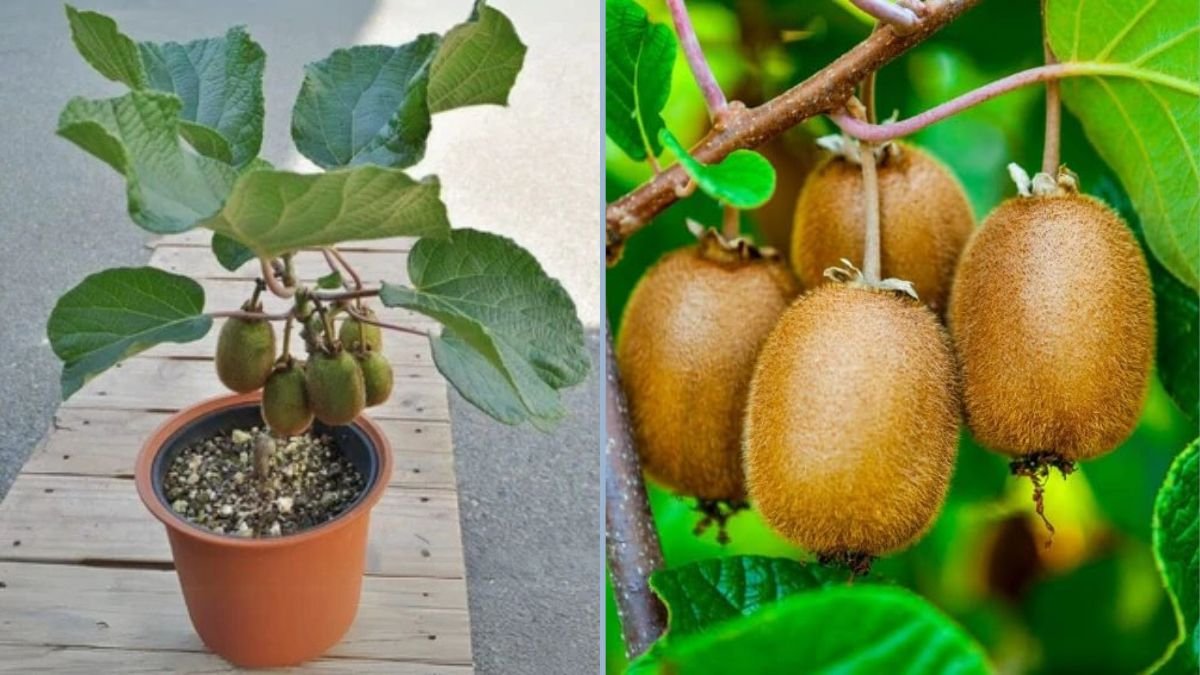Spring is in full swing in the Westmeath Garden, and April brings new life and exciting additions to our backyard orchard and vegetable beds. On 7th April 2019, two major highlights mark our gardening journey: the arrival of a kiwi berry plant and a promising update on our early potato crop.
In this post, we’ll explore the care, planting, and expectations for kiwi berries, along with insights into growing early potatoes successfully in a temperate Irish climate. From soil preparation to planting tips and maintenance, this guide will help both novice and experienced gardeners enjoy a productive and vibrant garden this season.
Exciting Arrival: Kiwi Berry Plant
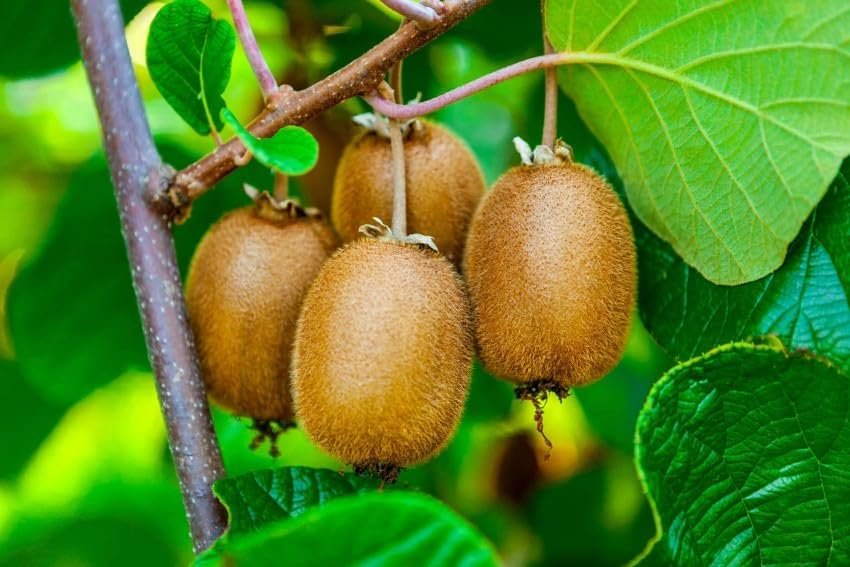
Kiwi berries (Actinidia arguta) are an exciting addition to any garden. Sometimes called “baby kiwi” or “hardy kiwi,” these plants produce small, smooth-skinned fruits that are sweet, tangy, and edible straight from the skin. Unlike the familiar fuzzy kiwi, kiwi berries are cold-hardy and perfect for temperate climates like Westmeath.
Why Grow Kiwi Berries?
- Hardy and Cold-Tolerant: Survives temperatures down to -25°C in winter.
- Compact Growth: Suitable for backyard trellises, fences, or pergolas.
- Nutritious Fruit: Rich in vitamin C, antioxidants, and fiber.
- High-Yielding: Produces abundant fruit on a relatively small plant.
- Ornamental Value: Beautiful foliage and fragrant flowers add visual appeal to your garden.
Kiwi berries are an excellent choice for gardeners who want exotic fruit in a temperate climate without extensive greenhouse setups.
Planting the Kiwi Berry
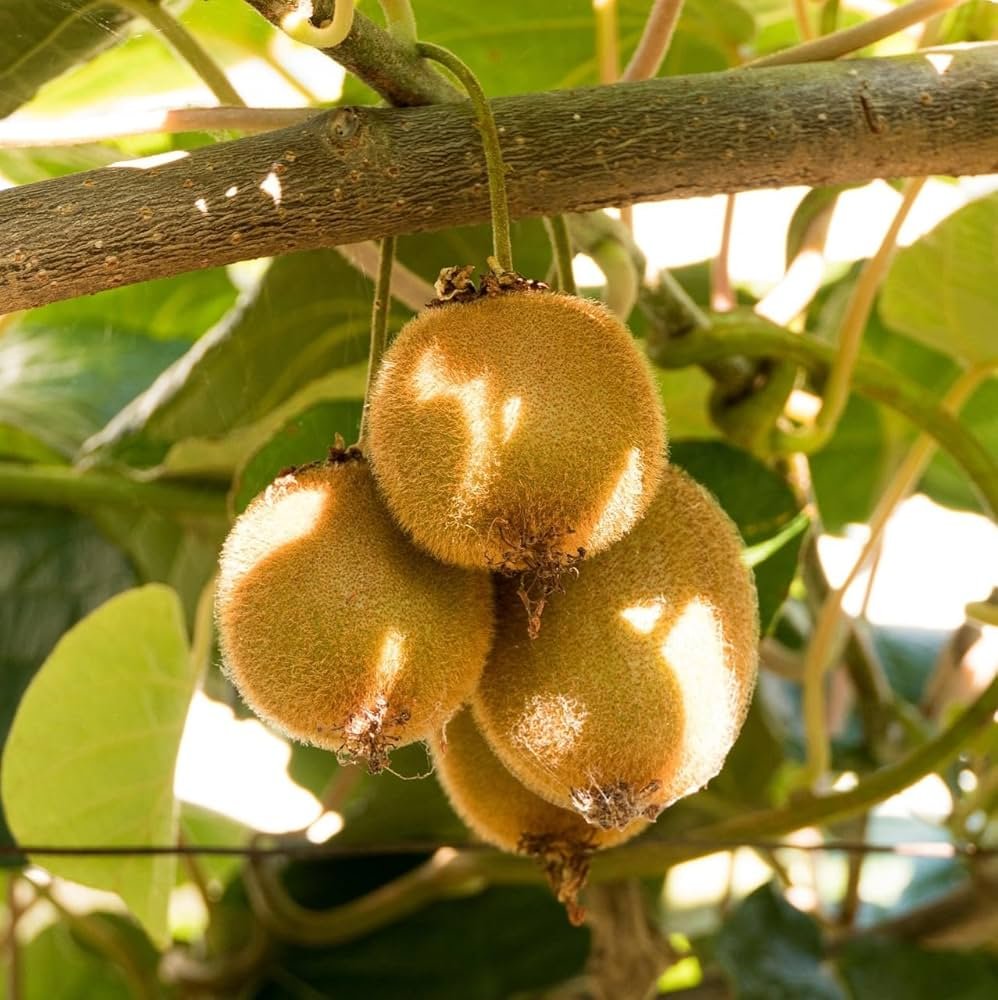
Proper planting is essential to ensure your kiwi berry thrives and produces fruit.
Site Selection
- Sunlight: Full sun exposure is ideal, although partial shade is tolerated.
- Soil: Well-draining, fertile soil with a pH of 5.5–7.0.
- Support: Kiwi berries are vigorous climbers, requiring a trellis, fence, or pergola for support.
Planting Steps
- Prepare the Soil: Dig a hole twice the size of the root ball, mixing in compost or well-rotted manure for fertility.
- Position the Plant: Place the kiwi berry plant upright, ensuring the root crown is at soil level.
- Backfill and Water: Fill in the hole, firm the soil gently, and water thoroughly.
- Trellis Installation: Train the young vine onto a sturdy support, guiding lateral branches for future fruiting.
- Mulch: Apply a 2–3 inch layer of mulch to retain moisture and suppress weeds, keeping it away from the crown.
Pollination
Kiwi berries are dioecious, meaning male and female flowers grow on separate plants. For fruit production, plant at least one male plant for every 6–8 females to ensure pollination. Bees and other pollinators help achieve successful fruit set.
Care and Maintenance of Kiwi Berries
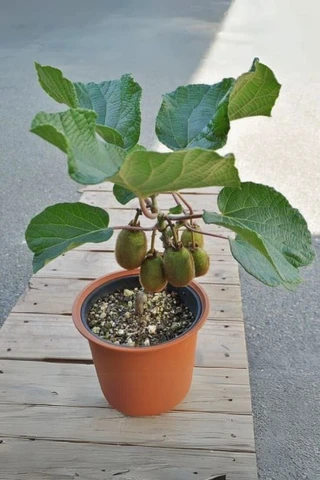
Kiwi berries require consistent care during establishment and fruiting:
Watering
- Young plants need regular, deep watering to establish roots.
- Mature vines are drought-tolerant but will produce better fruit with consistent soil moisture.
Fertilization
- Apply a balanced fertilizer in early spring to encourage vigorous growth.
- Avoid excessive nitrogen in summer, as it can promote leafy growth at the expense of flowering.
Pruning
- Prune during the winter while the plant is dormant.
- Remove old, crowded, or weak growth to improve air circulation and sunlight penetration.
- Maintain a manageable size for easier harvesting and better fruit quality.
With proper care, your kiwi berry plant will establish strong roots and healthy foliage, leading to bountiful fruit in 2–3 years.
Early Potatoes Update
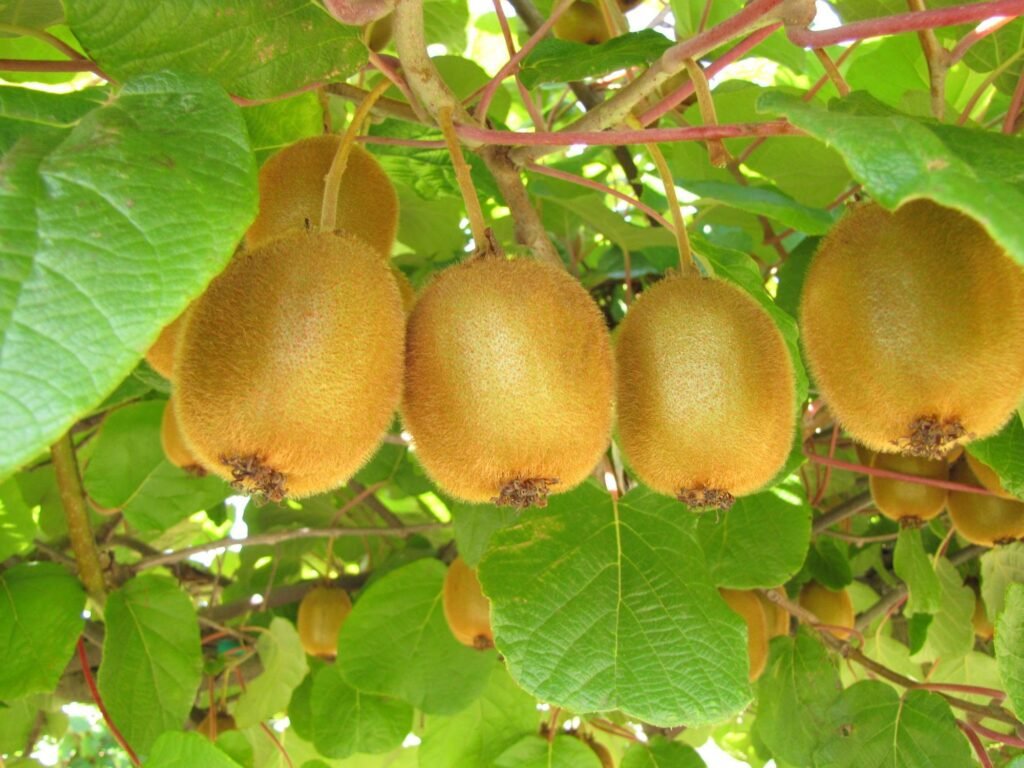
Alongside the excitement of a new kiwi berry plant, our early potatoes are showing promising growth. Early potatoes are often planted in March or early April to enjoy an earlier harvest compared to maincrop varieties.
Varieties and Soil Preparation
- We selected fast-maturing early varieties, ideal for temperate Irish gardens.
- Soil was prepared with well-rotted compost and a balanced organic fertilizer.
- Raised beds or slightly mounded rows ensure excellent drainage, preventing rot in cool, wet soil.
Planting Tips
- Seed Potato Preparation: Use certified disease-free seed potatoes. Cut larger tubers into pieces with at least one “eye” per piece.
- Spacing: Plant pieces 30–40 cm apart, with rows 50–60 cm apart for adequate airflow and growth.
- Depth: Plant 10–15 cm deep, covering with soil.
- Hilling: As shoots emerge, gradually mound soil around stems to encourage tuber formation and reduce sun exposure.
Potato Care and Maintenance
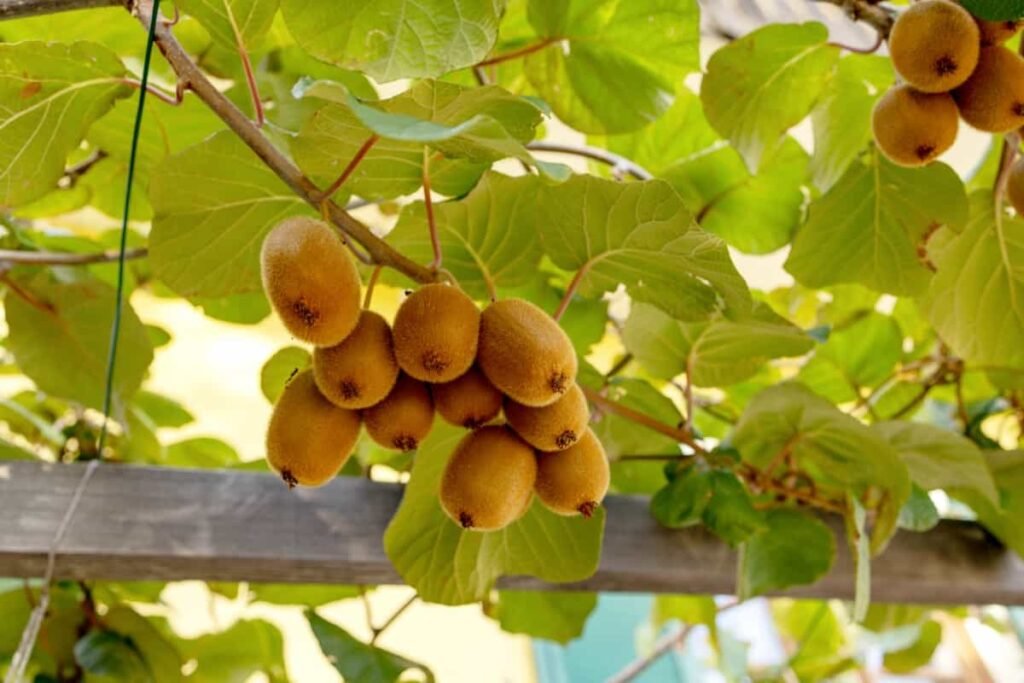
Proper care is essential for early potato success:
Watering
- Keep soil consistently moist, especially during tuber formation.
- Avoid waterlogging, which can cause rot or fungal infections.
Fertilization
- Apply a balanced, potassium-rich fertilizer once shoots appear to support tuber growth.
- Avoid excessive nitrogen, which encourages leafy growth at the expense of tubers.
Pest and Disease Management
- Aphids: Monitor leaves and control infestations with organic sprays or insecticidal soap.
- Blight: Early potatoes are susceptible to late blight, especially in wet conditions. Remove affected leaves promptly and ensure good spacing and airflow.
- Wireworms and Slugs: Use traps or barriers to protect emerging tubers.
Signs of Healthy Early Potato Growth
By early April, emerging shoots indicate that the potatoes are responding well to the mild spring weather. Look for:
- Strong, upright shoots free from yellowing or disease.
- Even spacing and well-mounded soil to support tuber development.
- Good soil moisture without waterlogging or crusting.
Healthy early potatoes will continue to develop through spring, leading to a harvest in June or July, depending on local conditions.
Combining Kiwi Berries and Early Potatoes in the Backyard Orchard
The Westmeath Garden demonstrates how diverse planting enhances a backyard orchard:
- Vertical Growth: Kiwi berries make use of vertical space, freeing the ground for vegetables like potatoes.
- Succession Planting: Early potatoes provide an early-season crop, while kiwi berries are a long-term investment for late summer or autumn harvest.
- Biodiversity: Mixing fruit and vegetable crops promotes healthier soil and beneficial insects, supporting sustainable gardening practices.
This combination showcases efficient space use, continuous harvest, and seasonal interest in a home garden.
Tips for Success in a Temperate Garden
- Monitor Weather: Late frosts in April can damage tender shoots; use cloches or fleece for protection.
- Soil Health: Regularly amend with compost to maintain fertility for both potatoes and kiwi berries.
- Mulching: Conserves moisture, suppresses weeds, and regulates soil temperature.
- Regular Inspection: Check plants weekly for pests, diseases, or nutrient deficiencies.
- Trellis Maintenance: For kiwi berries, ensure supports are sturdy enough to carry heavy fruit as the vine matures.
By following these tips, gardeners can enjoy healthy crops and early harvests in a temperate garden like Westmeath.
Looking Ahead
With the arrival of our kiwi berry plant and the early potato shoots emerging, the Westmeath Garden is off to a promising start this season. Over the next few months, we’ll focus on:
- Training and pruning the kiwi berry vine for optimal growth and fruiting.
- Monitoring and hilling early potatoes to encourage strong tuber formation.
- Protecting young plants from pests and extreme weather.
- Planning for summer crops to maximize garden productivity.
These steps ensure continuous harvests and a vibrant backyard orchard, combining fruits and vegetables for home enjoyment.
Conclusion
April in the Westmeath Garden brings both new beginnings and promising growth. The arrival of a kiwi berry plant introduces an exciting fruiting opportunity, while the early potato shoots demonstrate healthy progression toward an early harvest.
By focusing on proper planting, care, and maintenance, gardeners can successfully grow kiwi berries and early potatoes together, creating a productive, diverse, and sustainable backyard orchard.
Whether you’re savoring homegrown potatoes in early summer or planning to taste your first kiwi berries in a few years, the rewards of careful gardening and seasonal attention are immeasurable. The Westmeath Garden update reminds us that every new plant and every emerging shoot is a step toward a fruitful, fulfilling gardening season.
